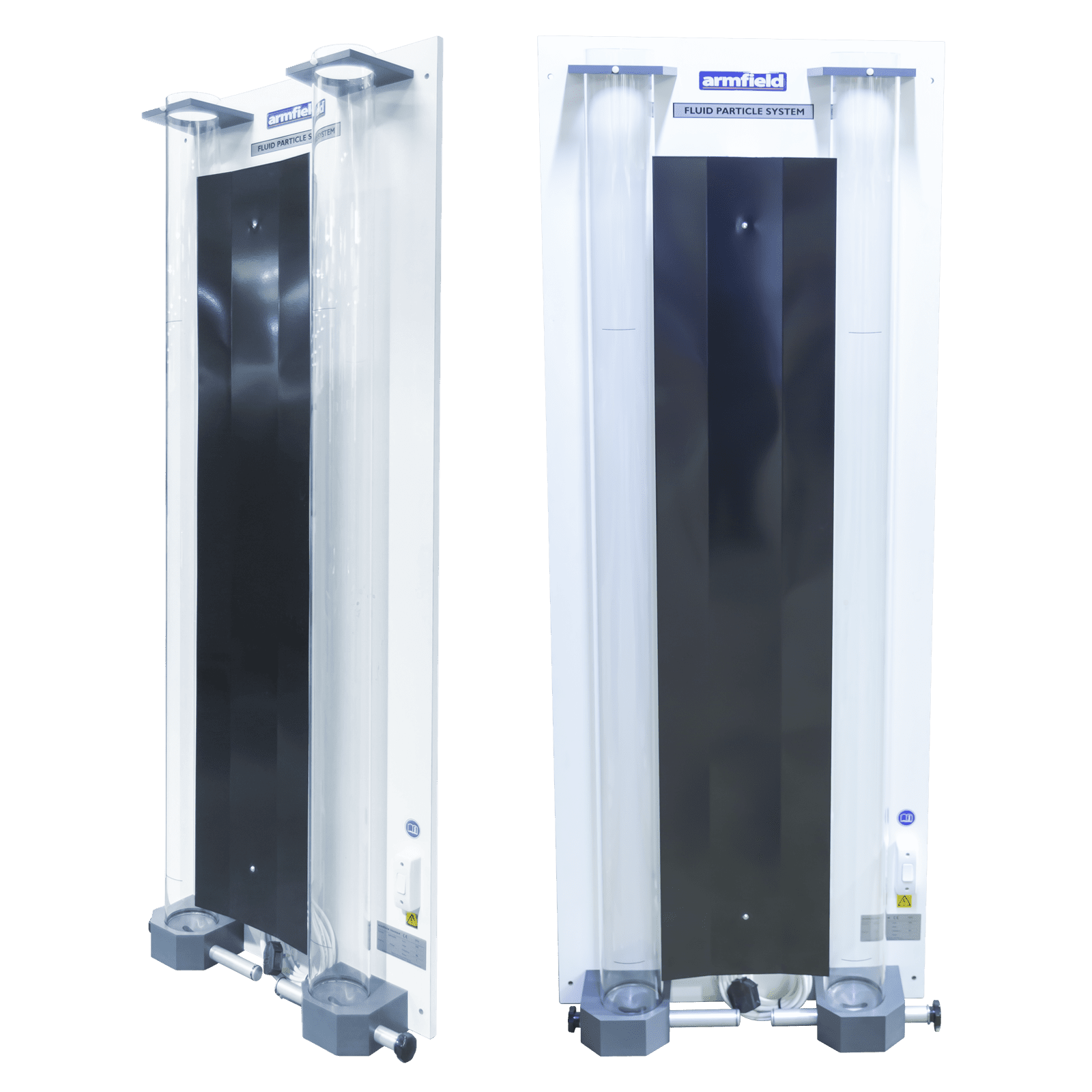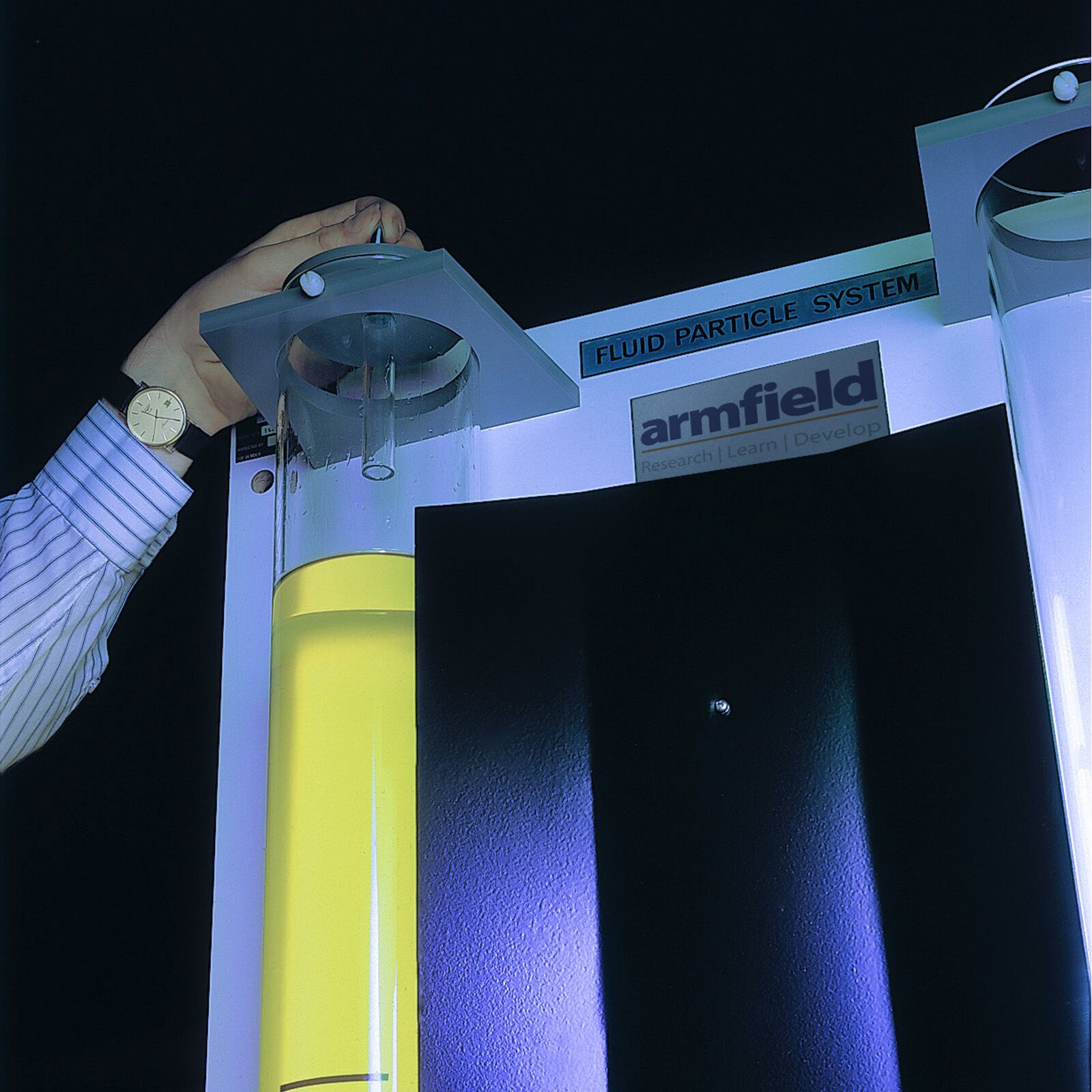F12 – Particle drag coefficients
The apparatus has been designed to introduce students to the fundamental characteristics of the behaviour of particle/fluid systems, in particular the relationship between the drag coefficients of falling particles and their Reynolds’ number value.
Description
The apparatus has been designed to introduce students to the fundamental characteristics of the behaviour of particle/fluid systems, in particular the relationship between the drag coefficients of falling particles and their Reynolds’ number value.
Particles covering a range of sizes and densities are supplied. The experiments are conducted by allowing single particles to fall through a number of different liquids contained in vertical glass tubes. Blockage effects are reduced to a minimum as the largest particle used has a projected area of only 1% of the tube cross-section.
The rate of fall of the particles is determined by timing their passage between two marks on the walls of the glass tubes.
The equipment consists of two precision glass tubes 1.5m long and 93mm inside diameter fixed vertically on a wall-mounted backboard. A guide is provided at the top of each tube to facilitate the introduction of particles with the minimum of disturbance to the liquid. A sliding valve device at the bottom of each tube allows the particles to be removed with minimum loss of liquid.
Observation of the particle movement is aided by a shielded fluorescent light mounted on the backboard between the glass tubes, marks on the tubes enable the rate of fall to be timed.
In addition to the range of spheres, two streamlined shaped objects are supplied to allow comparison to be made between their drag coefficients and those of the spheres.
Technical Specifications
Tube length: 1500mm
Outside diameter: 100mm
Inside diameter: 93mm
Streamlined shapes: x2
Supplied spheres:
Stainless Steel
3.17mm diameter
6.35mm diameter
7.9mm diameter
9.5mm diameter
Ceramic
6.35mm diameter
9.5mm diameter
Features & Benefits
- Measurement of drag coefficients of spheres over several decades of particle Reynolds’ number
- Exploration of dimensional analysis and dynamic similarity
- Introduction to the effects of boundary layer separation on motion of spheres
- Effect of particle shape on rate of fall and on drag coefficient
- Compact, wall mounted apparatus to study the behaviour of particles and shapes within fluids
- Two transparent vertical glass tubes, back lit by a fluorescent lamp for ease of viewing
- Tube sizes 93mm inside diameter by 1.5m long, with calibration marks for timing
- Guide to aid the insertion of particles at the top of the tubes
- Sliding valves to aid the removal of particles from the bottom of the tubes
- The equipment is supplied with sets of spheres of different sizes and materials, plus two streamlined shapes
Electrical supply: Single phase
- F12-A: 220-240V/1ph/50Hz, 10A
- F12-B: 120V/1ph/60Hz, 20A
- F12-G: 220-240V/1ph/60Hz, 10A
Essential Equipment (not supplied by Armfield)
- Stopwatch or stop clock
- Glass beaker
PACKED AND CRATED SHIPPING SPECIFICATIONS
Volume: 0.7m³
Gross Weight: 80Kg
Length: 0.60m
Width: 0.16m
Height: 1.57m
- F12-A: 220-240V / 1ph / 50Hz, 1 amp
- F12-B: 120V / 1ph / 60Hz, 2 amp
- F12-G: 220-240V / 1ph / 60Hz, 1 amp





